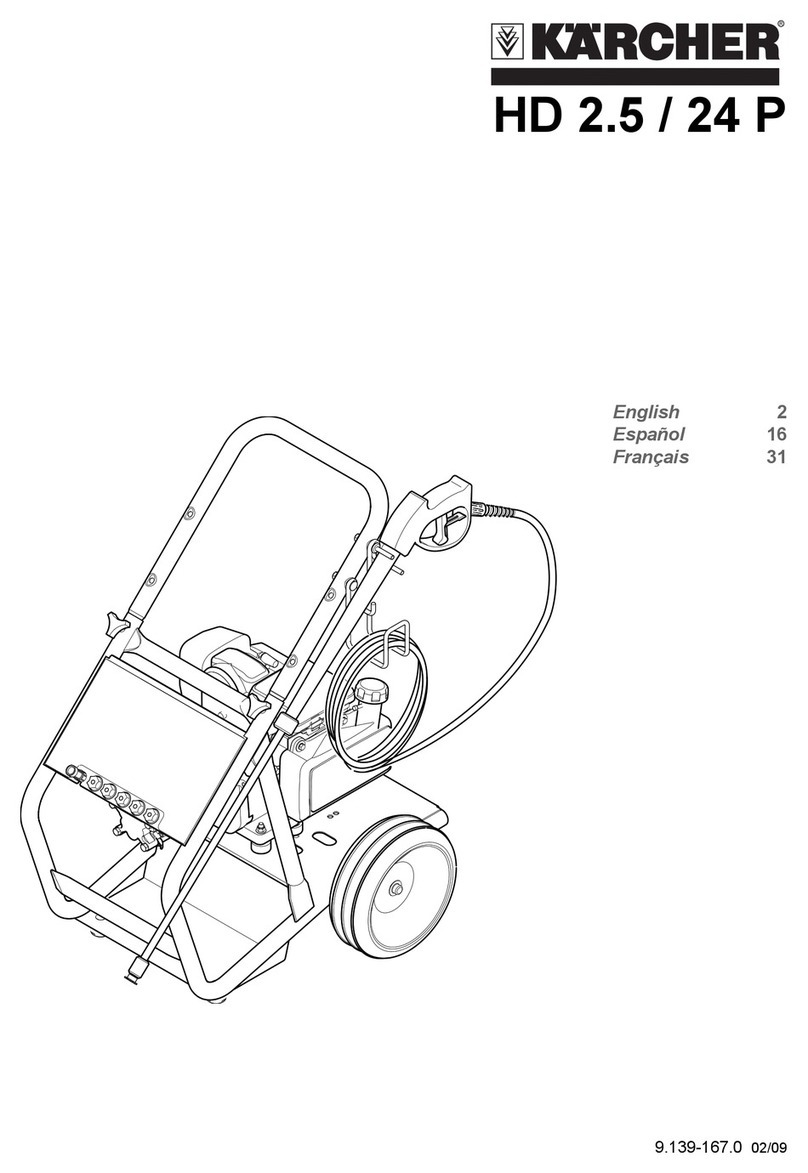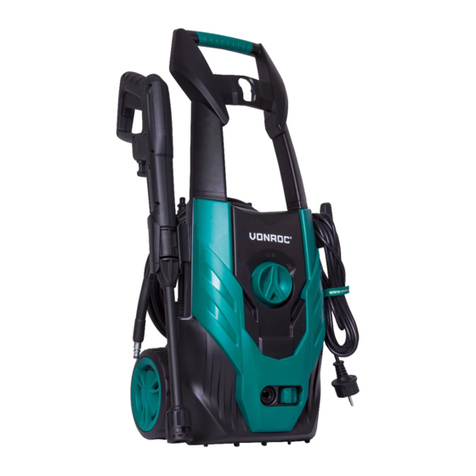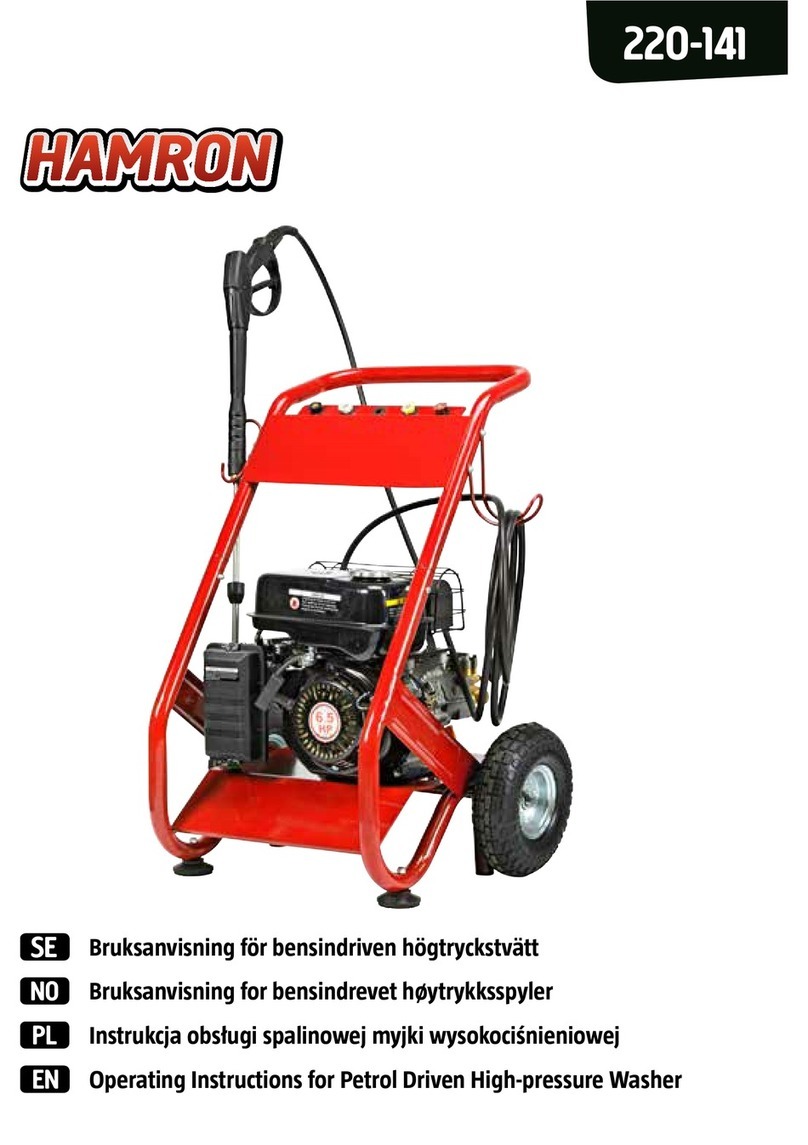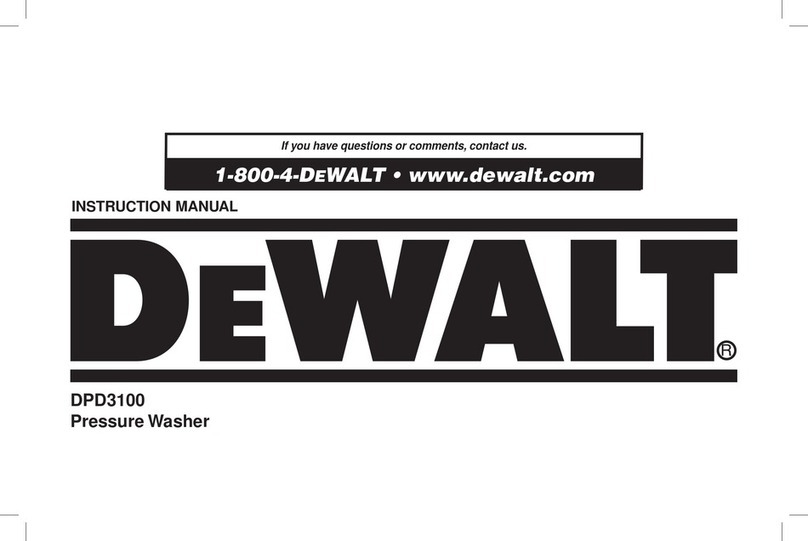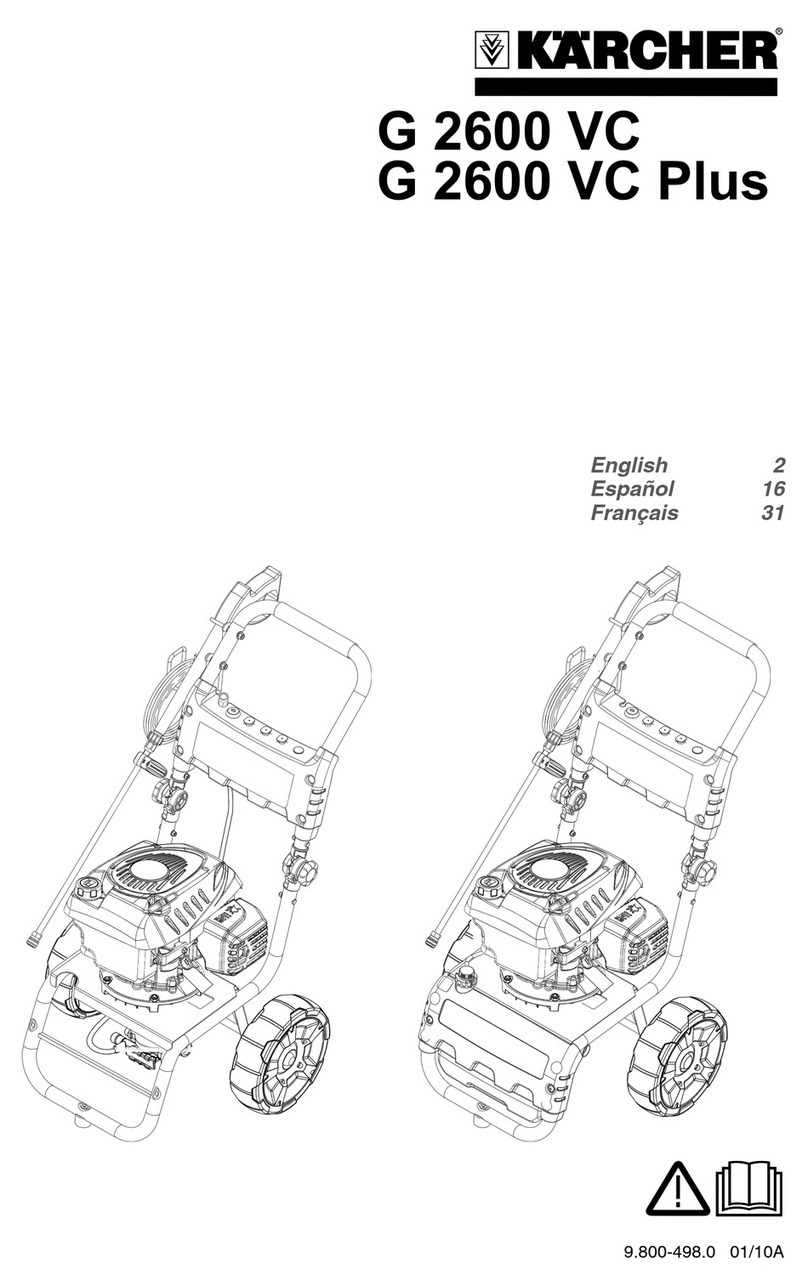Siebring 7500S User manual

PRESSURE WASHERS
INSTRUCTIONS
Manufacturers of Quality Equipment Since 1910
PO Box 658 303 S. Main St. George, IA. 51237
Phone 888-475-3317 Fax 712-475-3490


TABLE OF CONTENTS
1. TABLE OF CONTENTS
2. INTRODUCTION
3. OPERATOR SAFETY
4. PERSONAL SAFETY
5. GENERAL SAFETY
6. GENERAL OPERATING INSTRUCTIONS
7. TEMP CONTROL / DEMA INJECTOR
8. FLOW SWITCH
9. FLOW CONTROL
10. THERMOSTAT
11. PRESSURE SENSITIVE REGULATING UNLOADER – HOW IT WORKS
12. PRESSURE SENSITIVE REGULATING UNLOADER – SPRAY MODE
13. PRESSURE SENSITIVE REGULATING UNLOADER – BYPASS MDOE
14. UNLOADER – DECRIPTION & TROUBLESHOOTING
15. UNLOADER – GOLDEN EAGLE 7100
16. UNLOADER – CAT 7500S
17. UNLOADER – CAT 7534
18. UNLOADER – CAT 7600S
19. UNLOADER – CAT 7672
20. NOZZLES AND TIPS
21. TROUBLESHOOTING INDEX
22. TROUBLESHOOTING CONTINUED
23. TROUBLESHOOTING CONTINUED
24. TROUBLESHOOTING CONTINUED
25. TROUBLESHOOTING CONTINUED
26. TROUBLESHOOTING CONTINUED
27. TROUBLESHOOTING CONTINUED
28. TROUBLESHOOTING / DELIMING
29. WINTERIZING (CAT BULLETIN 083)
30. WIRE SIZE / LINE LOSS
31. PARTS INDEX
32. PARTS CONTINUED
33. PARTS CONTINUED
34. CWG 704 (BEECH) PARTS
35. WIRING DIAGRAM (HDD 3004)
36 – 38 LABELS – CAUTIONS & WARNINGS
1

INTRODUCTION
The general misunderstanding of a steam cleaner and hot pressure washer should be
understood.
The first generation of hot, low pressure cleaning was the steam cleaner – one to two
gallons of water heated 300°- 500°F. were discharged against dirt at 100 – 125 PSI. As
the water left the nozzle, the pressure drop caused the water temperature to drop to 212°
and much of the water temperature dissipated into the air as water vapor. Dirt and
grease were melted and dripped off of the object being washed.
The second generation of hot cleaning now uses 600 – 1200 PSI high pressure at 100°-
200°F. water temperature. 1.5 to 5.0 GPM are discharged against the dirt. The un-
vaporized hot water strikes the dirt, cutting sticky and stubborn dirt with kinetic energy
and thermal action.
Siebring Manufacturing has been in the business since 1910. Siebring was involved in
the first generation of steam cleaning equipment and has continually worked in the
development of and rugged hot, high pressure washers. In the mid sixties, Siebring was
again was on the ground floor with new developments, incorporating new designs, higher
pressure pump applications and the like.
GENERAL APPLICATIONS
Greases with heavy wax bases, animal oils in animal waste and dirt and grime are
targets for this equipment.
Engine and transmission rebuilding, heavy equipment in farm, construction, excavation
and industry are applications for easy cleaning in short periods of time.
Building, preparation for painting, special shop maintenance, cleaning animal
confinements, meat processing, chemical and petroleum industries all favor hot, high
pressure cleaning.
Construction and industrial equipment repair preparation normally requires hot pressure
washing.
A newer, specialized use for this equipment is to heat and apply de-icing and anti-icing
solutions for the aircraft industry. The same equipment is used for air frame and power
plant cleaning.
Road film – Unfortunately, road film is untouched by hot or cold pressure washing. It
must be physically contacted to break the static bond causing road film cleaning
problems.
SIEBRING PRESSURE WASHERS
2

OPERATOR SAFETY INSTRUCTIONS
DANGER!
DO NOT ATTEMPT TO INSTALL OR OPERATE THIS MACHINE UNTIL YOU HAVE
READ THIS MANUAL. IF YOU OR YOUR OPERATOR CANNOT READ ENGLISH,
HAVE THIS MANUAL EXPLAINED FULLY BEFORE ATTEMPTING TO OPERATE THIS
EQUIPMENT.
DANGER! (Electric Models)
THIS MACHINE MUST BE PROPERLY GROUNDED TO AVOID FATAL ELECTRICAL
SHOCK IN THE EVENT THAT IT BECOMES ACCIDENTALLY GROUNDED. HAVE
ELECTRICAL CONNECTIONS MADE BY A QUALIFIED ELECTRICIAN.
WARNING! (Electric Models)
DISCONNECT THIS MACHINE FROM ELECTRICAL SOURCE BEFORE MAKING ANY
REPAIRS.
WARNING!
THIS MACHINE IS DESIGNED TO PRODUCE VERY HIGH PRESSURE AND
TEMPERATURE AT THE GUN TIP. TO PREVENT INJURY OR DAMAGE, HOLD
CLEANING GUN SECURELY AT ALL TIMES WHEN PUMP IS IN OPERATION AND
FLUID IS BEING SPRAYED.
CAUTION!
CHECK CLEANING EQUIPMENT, REMOTE HOSE, GUN, WAND AND FITTINGS
PRIOR TO OPERATION. DO NOT OPERATE THIS MACHINE WITH A DAMAGED OR
WORN HOSE, LEAKS, OR WITH ANY COVERS OFF THAT WOULD EXPOSE BELTS,
PULLEYS OR ELECTRICAL DEVICES OR CONNECTIONS.
DANGER!
TAMPERING WITH THE MACHINE’S FACTORY PRESET UNLOADER VALVE
SETTINGS AND/OR THE PRESSURE RELIEF VALVE SETTING COULD RESULT IN A
MACHINE EXPLOSION. DO NOT ATTEMPT TO CHANGE THE SETTINGS.
DISCONTINUE USE IF A MALFUNCTION OCCURS AND CONTACT YOUR LOCAL
AUTHORIZED DISTRIBUTOR.
DANGER
DO NOT OPERATE THE UNIT WITH A MALFUNCTIONING BURNER OR BURNER
CONTROLS. INSPECT BURNER AND BURNER CONTROL OPERATION BEFORE
EACH USE. IF YOU SUSPECT A PROBLEM WITH THE BURNER, DISCONTINUE
USE IMMEDIATELY AND INVESTIGATE.
DANGER
DO NOT POINT GUN AT PEOPLE OR ANIMALS! RESULTS COULD BE FATAL! HIGH
PRESSURE WATER DAMAGES THE SKIN AND CAN INJECT WATER INTO THE
BODY.
DANGER
DO NOT REFUEL ENGINE SUPPLY TANK OR BURNER SUPPLY TANK WHILE UNIT
IS RUNNING OR HOT, ALLOW UNIT TO COOL PRIOR TO REFUELING.
3
This manual suits for next models
5
Table of contents
